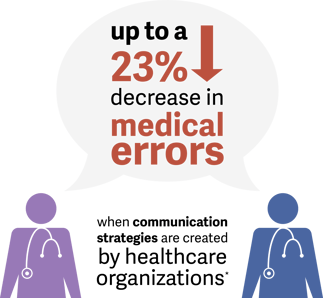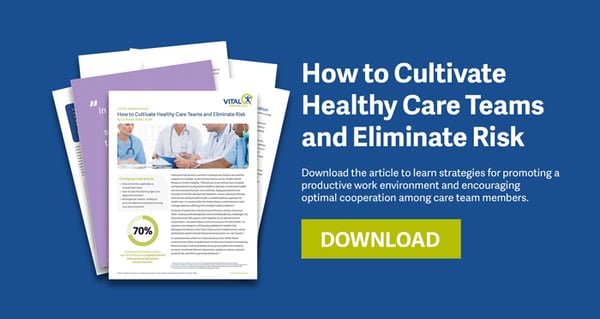A high-functioning care team is one in which communication among its members is high-functioning. On the
other hand, as Michelle O’Daniel and Alan H. Rosenstein, MD point out, “Lack of communication creates situations where medical errors can occur. These errors have the potential to cause severe injury or unexpected patient death.”1 Tackling this crucial element of team medical practice in a research report, Susan B. Childress, RN, MN, OCN, notes healthcare practitioners have looked to other industries, including aviation, for means of improving communication. In aviation, training improvements and checklists have proved important in reducing errors.
Tackling this crucial element of team medical practice in a research report, Susan B. Childress, RN, MN, OCN, notes healthcare practitioners have looked to other industries, including aviation, for means of improving communication. In aviation, training improvements and checklists have proved important in reducing errors.
“With this knowledge,” Childress writes, “health care interventions to improve communication among teams have included preoperative briefings, hand-off improvements such as SBARQ tools2, check-off lists, and medication reconciliation procedures.”
But Childress goes beyond the use of communication tools
to look at what research has to say about issues such as power dynamics within teams—especially between physicians and nurses—and how they can be addressed to improve communication.
“A 2003 study,” she writes, “…identified three factors present when nurses felt they had a collegial relationship with their physicians: (1) nursing staff perception of their role as ‘equal but different’ and articulation of how their knowledge was unique and worth communicating; (2) an institutional culture values, expects, and rewards collegial relationships between nurses and physicians; and (3) expectations that nurses maintain clinical competence in their specialty, along with assistance in doing so, which promotes confident communication.”
A 2005 study Childress cites recommends focusing on understanding others’ points of view, avoiding “compassion fatigue,” and learning how to manage conflict.
And 2013 research showed communication improvement when teams employed the Two-Challenge Rule. “This rule,” Childress writes, “requires team members to state their observations at least twice to ensure that their interests are being addressed.”
These strategies are part of an ongoing effort on the part of the medical profession to enhance person-to-person relationships on care teams. As O’Daniel and Rosenstein sum up the situation, “effective clinical practice must not focus only on technological system issues, but also on the human factor. ... It is important for health care organizations to assess possible setups for poor communication and be diligent about offering programs and outlets to help foster team collaboration.”3
For more on fostering high-functioning care teams, see our article “How to Cultivate Healthy Care Teams and Eliminate Risk”
Interested in learning more about creating an atmosphere of healthy interactions between all care team members? Contact us today and see for yourself how you can leverage our experience to improve physician and clinician well being and care team relationships in your can healthcare organization.



